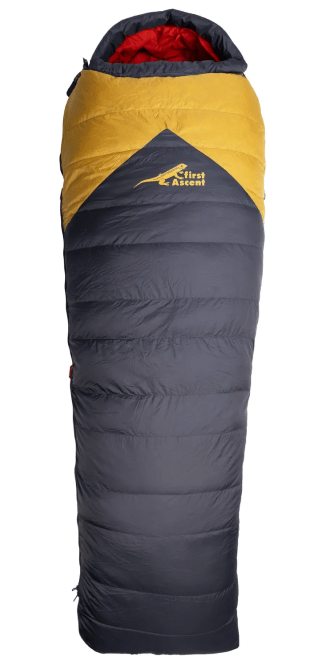Sleeping Bag Guide
Sleeping Bag Guide
A good night’s sleep can make all the difference on any outdoor adventure, and it all starts with the right sleeping system.
At the core of that system is your sleeping bag. In this guide, we unpack First Ascent’s sleeping bag range and
the key factors to consider, from Down vs. Synthetic insulation to seasonal suitability.
Top things to consider when choosing a sleeping bag:
A good night’s sleep can make all the difference on any outdoor adventure, and it all starts with the right sleeping system. At the core of that system is your sleeping bag. In this guide, we unpack First Ascent’s sleeping bag range and the key factors to consider, from Down vs. Synthetic insulation to seasonal suitability.
Top things to consider when choosing a sleeping bag:
Sleeping bag ratings such as T-comfort, T-limit and T-extreme are all based on the ISO 23537 standards used to ensure consistent sleeping bag temperature ratings across brands. Lab tested temperature ratings and real word comfort may differ due to all the factors that a lab test cannot accurately simulate.
Here is what the different ratings mean:
T-comfort: The lower limit at which an average person, lying on their back, in a relaxed position will sleep comfortably, but is at the threshold of feeling cold. This is the most practical rating, especially those who tend to get cold easily when sleeping.
T-limit: The lower limit at which an average person, lying in a curled-up position, is in thermal equilibrium and at the threshold of feeling cold. This is a more performance-oriented rating, used for those who are more experienced, "warm sleepers" and willing to push limits.
T-extreme: The lower limit at which an average person can maintain warmth for up to six hours without the risk of hypothermia. This is a survival rating and should only be applied in extreme conditions.
Down
Down insulation offers excellent warmth-to-weight ratio, making it a top choice when packability and low weight are priorities. Its natural loft allows it to also compress easily. However, not all down is equal and higher quality or "cleaner" down typically deliver better performance.
Down sleeping bags are best suited to cold, dry conditions, as down loses its insulating properties when wet.
Synthetic
Synthetic insulation was developed as an alternative to natural down. While synthetic insulation typically offers less packability and is slightly heavier than down, it is often more affordable. One of its key advantages is that it retains some insulating properties even when wet, making it a more reliable option in damp or humid conditions.
When weight is a priority, Down is recommended for its lower mass, excellent warmth-to-weight ratio, and superior compressibility. However, weight isn’t the only consideration—your body size and shape should also match the dimensions of the sleeping bag.
Sleeping bags generally come in three basic shapes: rectangular, semi-rectangular, and mummy.
1. Mummy-shaped bags offer a snug fit, which improves warmth and reduces weight by minimizing excess fabric. With this shape, you tend to roll with the bag rather than inside it.
2. Rectangular bags provide more room to move but sacrifice some thermal efficiency due to cold spots and heat loss, especially around the shoulders and near the feet.
3. The semi-rectangular (or modified mummy) shape strikes a balance, offering a comfortable compromise between warmth and freedom of movement.
An important part of your sleeping bag choice is the gear that complements it. Since body weight compresses the sleeping bag insulation beneath you, reducing its effectiveness, an insulated sleeping mat is essential for warmth and overall performance. A sleeping bag liner also adds warmth, protects the bag’s interior, and is easier to wash, helping extend the life of your sleeping bag.
Sleeping bag ratings such as T-comfort, T-limit and T-extreme are all based on the ISO 23537 standards used to ensure consistent sleeping bag temperature ratings across brands. Lab tested temperature ratings and real word comfort may differ due to all the factors that a lab test cannot accurately simulate.
Here is what the different ratings mean:
T-comfort: The lower limit at which an average person, lying on their back, in a relaxed position will sleep comfortably, but is at the threshold of feeling cold. This is the most practical rating, especially those who tend to get cold easily when sleeping.
T-limit: The lower limit at which an average person, lying in a curled-up position, is in thermal equilibrium and at the threshold of feeling cold. This is a more performance-oriented rating, used for those who are more experienced, "warm sleepers" and willing to push limits.
T-extreme: The lower limit at which an average person can maintain warmth for up to six hours without the risk of hypothermia. This is a survival rating and should only be applied in extreme conditions.
Down
Down insulation offers excellent warmth-to-weight ratio, making it a top choice when packability and low weight are priorities. Its natural loft allows it to also compress easily. However, not all down is equal and higher quality or "cleaner" down typically deliver better performance.
Down sleeping bags are best suited to cold, dry conditions, as down loses its insulating properties when wet.
Synthetic
Synthetic insulation was developed as an alternative to natural down. While synthetic insulation typically offers less packability and is slightly heavier than down, it is often more affordable. One of its key advantages is that it retains some insulating properties even when wet, making it a more reliable option in damp or humid conditions.
When weight is a priority, Down is recommended for its lower mass, excellent warmth-to-weight ratio, and superior compressibility. However, weight isn’t the only consideration—your body size and shape should also match the dimensions of the sleeping bag.
Sleeping bags generally come in three basic shapes: rectangular, semi-rectangular, and mummy.
1. Mummy-shaped bags offer a snug fit, which improves warmth and reduces weight by minimizing excess fabric. With this shape, you tend to roll with the bag rather than inside it.
2. Rectangular bags provide more room to move but sacrifice some thermal efficiency due to cold spots and heat loss, especially around the shoulders and near the feet.
3. The semi-rectangular (or modified mummy) shape strikes a balance, offering a comfortable compromise between warmth and freedom of movement.
An important part of your sleeping bag choice is the gear that complements it. Since body weight compresses the sleeping bag insulation beneath you, reducing its effectiveness, an insulated sleeping mat is essential for warmth and overall performance. A sleeping bag liner also adds warmth, protects the bag’s interior, and is easier to wash, helping extend the life of your sleeping bag.
Down Sleeping Bags
First Ascent Down sleeping bags deliver an excellent warmth-to-weight ratio, making it a great choice when packability
and low weight are priorities. Each bag is filled with pure, high-loft 650 fill power down, and tested to ISO 23537 standards.
These bags are also up to 20% lighter than synthetic alternatives offering the same comfort rating.
First Ascent Down sleeping bags deliver an excellent warmth-to-weight ratio, making it a great choice when packability and low weight are priorities. Each bag is filled with pure, high-loft 650 fill power down, and tested to ISO 23537 standards. These bags are also up to 20% lighter than synthetic alternatives offering the same comfort rating.


Ice Breaker Down
Ideal for
Hiking/Camping in very cold conditions


COMFORT RATING
-3°C
WEIGHT
1.62 kg
DOWN FILL
92/8 Goose Down
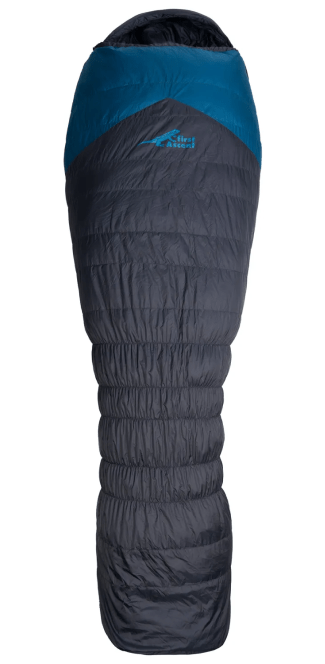

Amplify Down 900
Ideal for
Kilimanjaro/Everest Base Camp


COMFORT RATING
-3°C
WEIGHT
1.71 kg
DOWN FILL
92/8 Goose Down
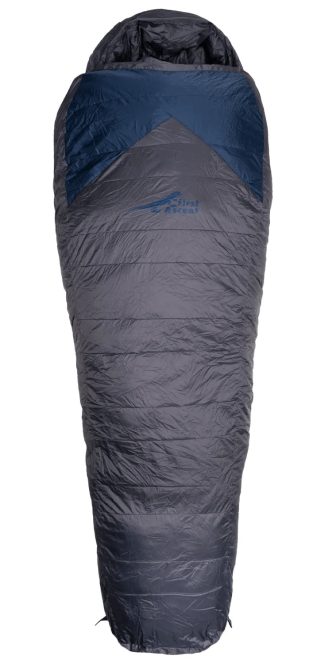

Blue Wolf Down
Ideal for
Everest/Arctic/Extreme Cold


COMFORT RATING
-15°C
WEIGHT
2.60 kg
DOWN FILL
92/8 Goose Down
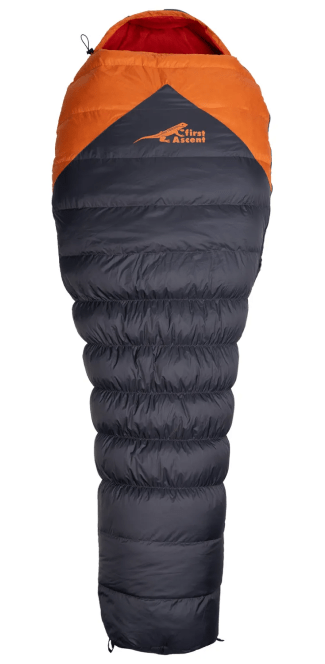

Amplify Down Light
Ideal for
Summer Hiking/Camping in cool conditions


COMFORT RATING
9°C
WEIGHT
0.595 kg
DOWN FILL
92/8 Goose Down
Synthetic Sleeping Bags
First Ascent Synthetic sleeping bags are made with high-performance Thermoshield insulation and a soft-touch
Microtex fabric outer. While slightly heavier and less compressible than down bags, they offer excellent value,
greater durability in wet conditions,and are often easier to clean and maintain.
First Ascent Synthetic sleeping bags are made with high-performance Thermoshield insulation and a soft-touch Microtex fabric outer. While slightly heavier and less compressible than down bags, they offer excellent value, greater durability in wet conditions, and are often easier to clean and maintain.
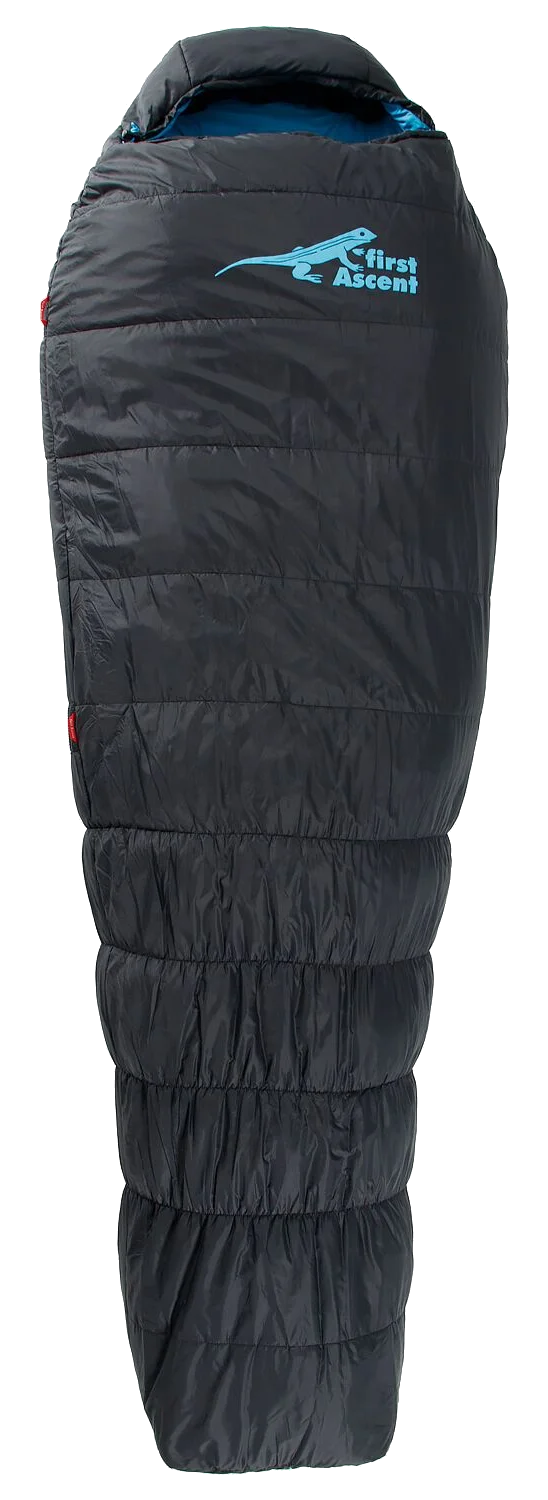

Amplify 900 Synthetic
Ideal for
Hiking/Camping in cool conditions


COMFORT RATING
7°C
WEIGHT
0.97 kg
DOWN FILL
100g/m2 Thermo-Shield
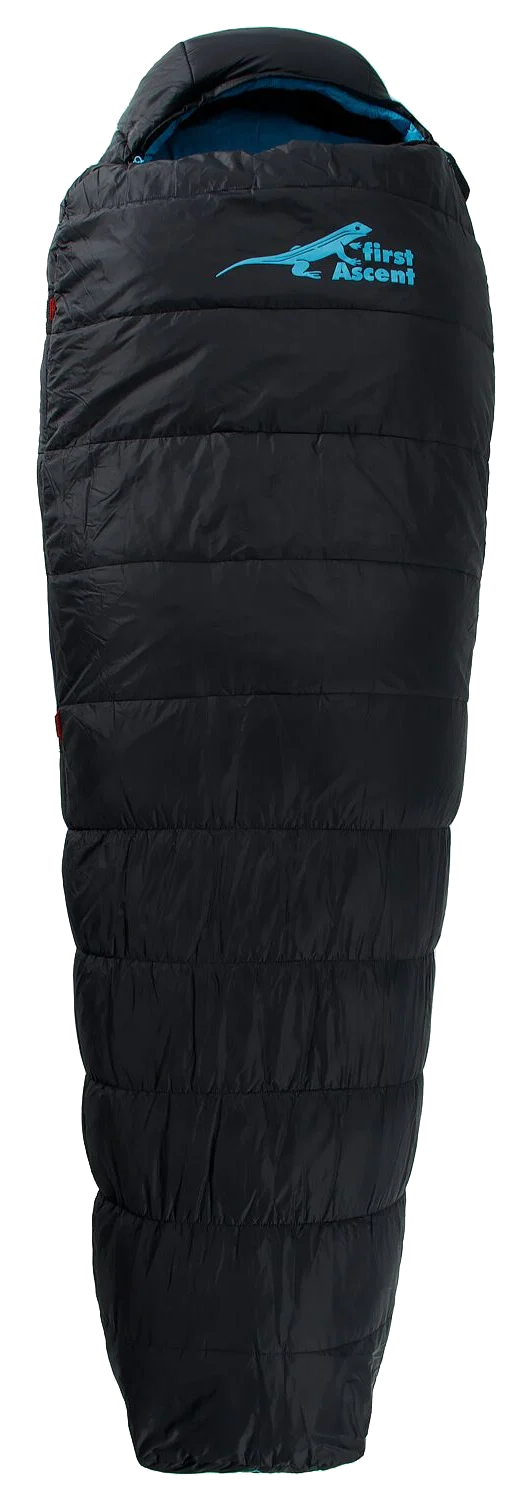

Amplify 1500 Synthetic
Ideal for
Hiking/Camping in cold conditions


COMFORT RATING
5°C
WEIGHT
1.52 kg
DOWN FILL
200g/m2 Thermo-Shield
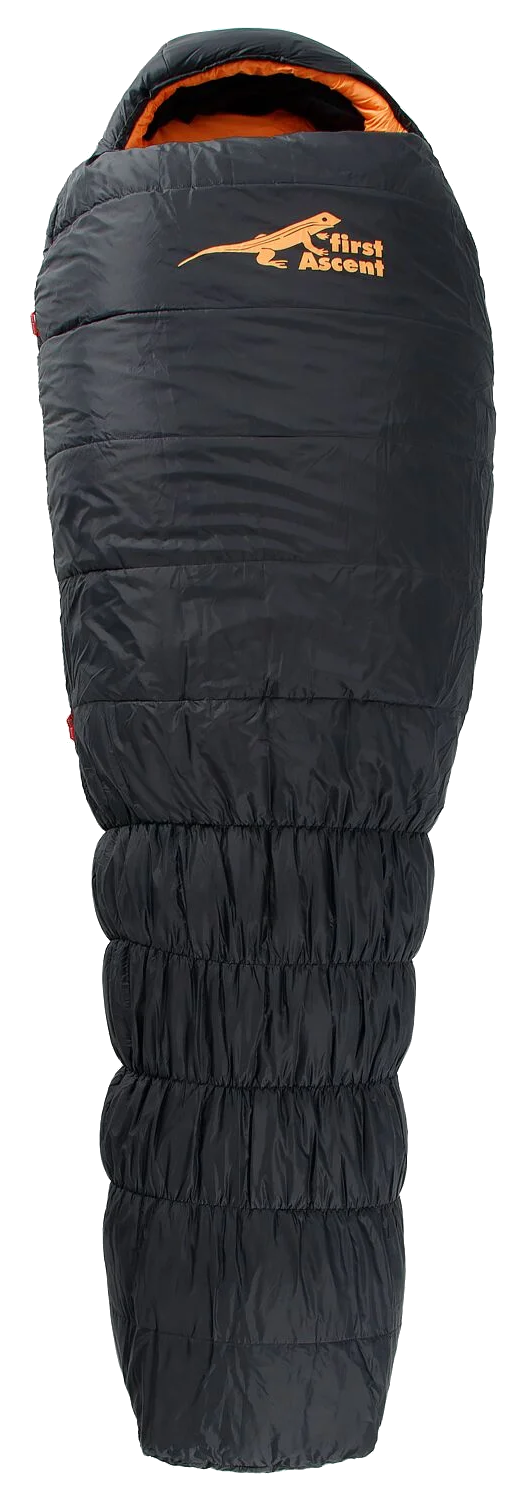

Amplify 1800 Synthetic
Ideal for
Hiking/Camping in cold conditions


COMFORT RATING
0°C
WEIGHT
1.89 kg
DOWN FILL
300g/m2 Thermo-Shield

